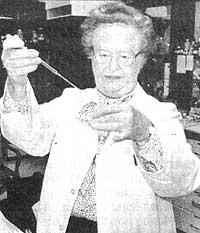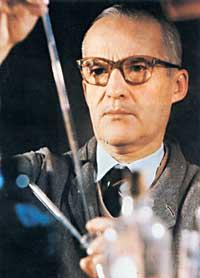Raman: effect and scientific
1990/06/01 Barandiaran, Mariaje | Irazabalbeitia, Inaki - kimikaria eta zientzia-dibulgatzaileaElhuyar Fundazioa Iturria: Elhuyar aldizkaria
For most of us, India is a mysterious and exotic territory, a village of sacred cows and curious philosophies. Like all images and topics, the above reflects a part of India's reality, but at the same time covers another larger part. These topics conceal that India is today a great scientific power, as is the case with polymers. We talked about one of the leaders that made it possible for India to become a scientific power. In addition to obtaining the Nobel Prize in Physics (first Nobel Prize in Science in Asia), Ran worked hard on the promotion and promotion of science and technology in India.
Childhood and youth
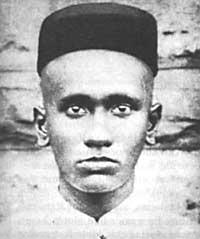
Chandrasekhara Venkatarama was born on November 7, 1888 in the village of Tiruguanaikagual in the Indian state of Tamil Nadu. He was the second of eight children. Chandraekhara was the name of his father and Venkatarama respectively. Later, he wrote his name Venkata Raman, so we have the Raman effect and not the Venkataraman effect.
His mother was Parvati Ammal, daughter of the famous family. His father, Chandrasekhara Iyer, belonged to a family of owners and was a professor of physics and mathematics.
Ramon received from his father the hobbies of science and music. His father received basic education in schools where he was a professor and studied at the Presidency College in Madras. He was a very fast student and in 1904, at the age of 16, he achieved the BA level. 1.
His teachers recommended him to be England to complete his studies (the best students in India formed his learning in Britain at that time), but he could not go, as the doctor told him he would kill his humid climate. So he continued studying at the Presidency College until he got the master's degree.
During those years he worked as a researcher and managed to publish two artiluks in the prestigious magazine The Philosophical Magazine (London). It was a great event. On the one hand, it was not easy to publish without help an article in two areas of physics without turning 18. On the other hand, science did not have very good situation in India and for example in the Presidency College no research was done.
Raman obtained his master's degree in January 1907, when he was 18 years old. When doing all his studies without leaving India, it was very difficult to find scientific work and his teachers recommended him to do an official examination for the Department of Finance. Examine and take first place.
Calcutta
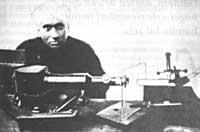
Contrary to the customs that were then in India, he chose his wife and made preparations for her wedding. He married Ammale Lokasundari, thirteen and a half years old.
The newlyweds went to Calcutta in June 1907 and joined the Raman Finance Department. One day, on his way home, he saw the Indian Association for the Cultivation of Science card hanging from a door. He knocked on the door and opened Ashuntosh Dey, his assistant for 25 years. Before the eyes of Ramón appeared a classroom full of dust and a laboratory. Raman was opened the doors of heaven when he saw him, seeing how to fulfill his dream of investigating.
When he requested authorization to conduct the investigation, his arms were opened and the laboratory keys were handed over to him. Raman opened up intense research work and for many years was a well-known direction for scientists, 210 Bowbazar Street.
He worked as a donkey. The daily schedule was as follows: at 5.30 am go to the Society; at 9.45 return home; bathe and breakfast; then take a taxi and go to work until 5 pm; work to the Association and work on it until 9.30 or 10. On Sundays he spent them entirely in the laboratory.
Raman has spent ten years working in the Association's laboratory and during that time published 30 articles in different scientific journals. He focused mainly on sound research.
University professor
In 1917 he was offered a chair of physics at the University of Calcutta. Although in the new position he won only a fifth of what he earned in the Department of Finance, he was interested in the chair offered. In that chair he worked for 16 years.
In 1921 the meeting of the universities of the British Empire of Oxford was held in England and Raman decided to attend it. This trip was a milestone in his research career. The greatest British scientists of the time in Oxford (J.J. Thompson, E. Rutherford and W.H. He met Bragg, among others. In England he made the decision to start working on the dispersion (dispersion) of light, and that decision was very prudent because it led him to discover the Raman effect.
He began working on the new line of research on his trip back to India. At that time it was thought that the blue color of the sea was the cause of reflection of the color of the atmosphere. Raman showed that the blue color of the sea is due to the dispersion of the light produced by the water through a simple experiment carried out on the boat that carried to India. The discovery was sent by a notice to the journal Nature. The notice included a simple postal address: S.S. Narkunda, Puerto de Bombay.
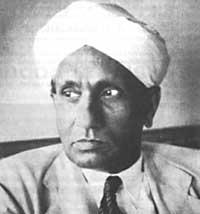
Raman, for his part, was quite proud and, for example, when he participated in the Royal Society of London, at the congratulatory party that was held in Calcutta, he said that after five years the Nobel Prize would be held. He failed for little.
Raman effect
Upon returning to India he focused on studying the dispersion of light. Fruit of this work were the large number of articles and the discovery of the Raman effect. In 1928 he made his enormous discovery.
Raman is a very weak dispersion (effect) (see wrong picture) and difficult to see. Currently strong light sources (laser), very sensitive detectors and spectrometers of very good optics are used. Raman, however, worked with very simple and simple tools. The light source was the sun, the spectrometer in a simple pocket version and the detector the human eye.
That was the experiment. Sunlight was stored by a heliostat on the roof of the laboratory and focused on a blister with very purified colorless liquid. The light before reaching the sample was passed through a filter that only allowed it to pass through the blue light. Looking at the blister on the one hand, the path of the ray of light was seen by the blue footprint left in the liquid. If the light from the sample was observed through a filter that absorbs blue light, the blue footprint disappeared, but there was still a very subtle, longer wavelength color footprint.
Over several years, Raman thought that such a subtle imprint was caused by some impurity. However, two things convince Raman of his inability. On the one hand, it remained in 80 very purified different liquids and it would be very surprising that the same impurity existed in all of them. Moreover, the light dispersed when glycerin was used was green and highly polarized.
Ramon concluded that part of the scattered light suffered a variation of its wavelength during the dispersion process.
On 27 February 1928, Raman decided to see the path of light through a spectroscope. When they prepared the apparatus the sun was hidden and they had to leave the program for the next day. On February 28, the first observation of the Raman effect was made. He observed the path of light through the spectroscope and without using the second filter. The scattered light had a blue color of incident light, but in the spectrum there was also a dark band. The same day he decided to use a stronger light source than the sun. To do this, an arc of mercury was enabled.
The mercury arc generates a fairly strong light with few spectral lines. When they used the arc, the spectrum of the benzene sample showed a different line to that of the incident light. The light therefore changed by the wavelength.
The next day he released the discovery through a newspaper in Calcutta. The dissemination of scientific discoveries through the press is therefore not something new.
Nobel Prize
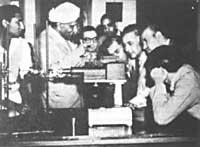
He was awarded in 1930 for the discovery of the Raman effect, so immediately after his discovery. This situation is not common in the case of the Nobel Prizes. Consequently, this immediacy underlined the importance of discovery.
Another brush stroke of Ramón is this. The Nobel Prizes are normally announced in November and are awarded on December 11. The maritime arrival time from India to Europe was very low, especially due to the difficulty of getting tickets. That year, because he was sure they were going to give him the prize or, in July, he booked tickets for Europe.
Bangalo
In April 1933 he left the University of Calcutta and became director of the Institute of Indian Sciences in Bangalore. In 1937 he was forced to leave the leadership, but as a teacher he remained there until 1947.
That same year he left the Institute and founded the Raman Institute in Bangalo. He had to overcome serious economic problems, but from there and from here he got money to start his idea. He did not want to get government money to maintain his institute, because he thought he could conduct a more independent investigation. To address the financial problems of the institute, and following the advice of a student of his, they created a workshop manufacturing shirts for kerosene lamps. This workshop maintained the institute with the benefits it obtained.
The last years of his life were very dark. It closed a lot and left relations with the outside world. He finally died on November 21, 1970 in Bangalo.
What is the raman effect?
The Raman effect is a particular scattering of light. To see the Raman effect or the Raman spectra, the sample is illuminated with strong monochromatic light and the scattered light is analyzed perpendicular to the source. The intensity of Raman spectrum lines does not exceed 0.01% of that of the source, making it difficult to detect and measure Raman lines.

Raman spectra indicate the fundamental state of a molecule and the energetic transitions between the first states of vibration. That is, basically the Raman effect and infrared absorption have the same origin, so the Raman spectrum and infrared spectrum will be very similar. However, there are differences. Infrared absorption requires that the vibration mode of a molecule is associated with the change of dipole or load distribution. The Raman effect does not require this redistribution and instant polarization in the elastic deformation of dispersion is the cause of radiation emission.
Until the appearance of the laser a mercury arc of high current and low pressure was used as a light source. Helium/neon lasers are currently used.
Raman spectra are used in the same way as infrared spectra to identify the structure of molecules. In general, each molecule has a special spectrum. However, in the case of complex organic molecules, Raman spectra are less characteristic and in these cases less useful for identifying molecules.
On the other hand, Raman spectroscopy has a remarkable advantage over the infrared. Raman spectra are easily obtained in aqueous solution.
1.
In the British education system, the BA level is the degree obtained after three years at university. With 5 years you get the master.

Gai honi buruzko eduki gehiago
Elhuyarrek garatutako teknologia




